In this Pasta Primavera recipe, I swap the heavy cream for a lighter lemony sauce that lets the colorful seasonal vegetables shine. This vegetarian pasta is easy, healthy, and very weeknight-friendly–it’s ready in 40 minutes!
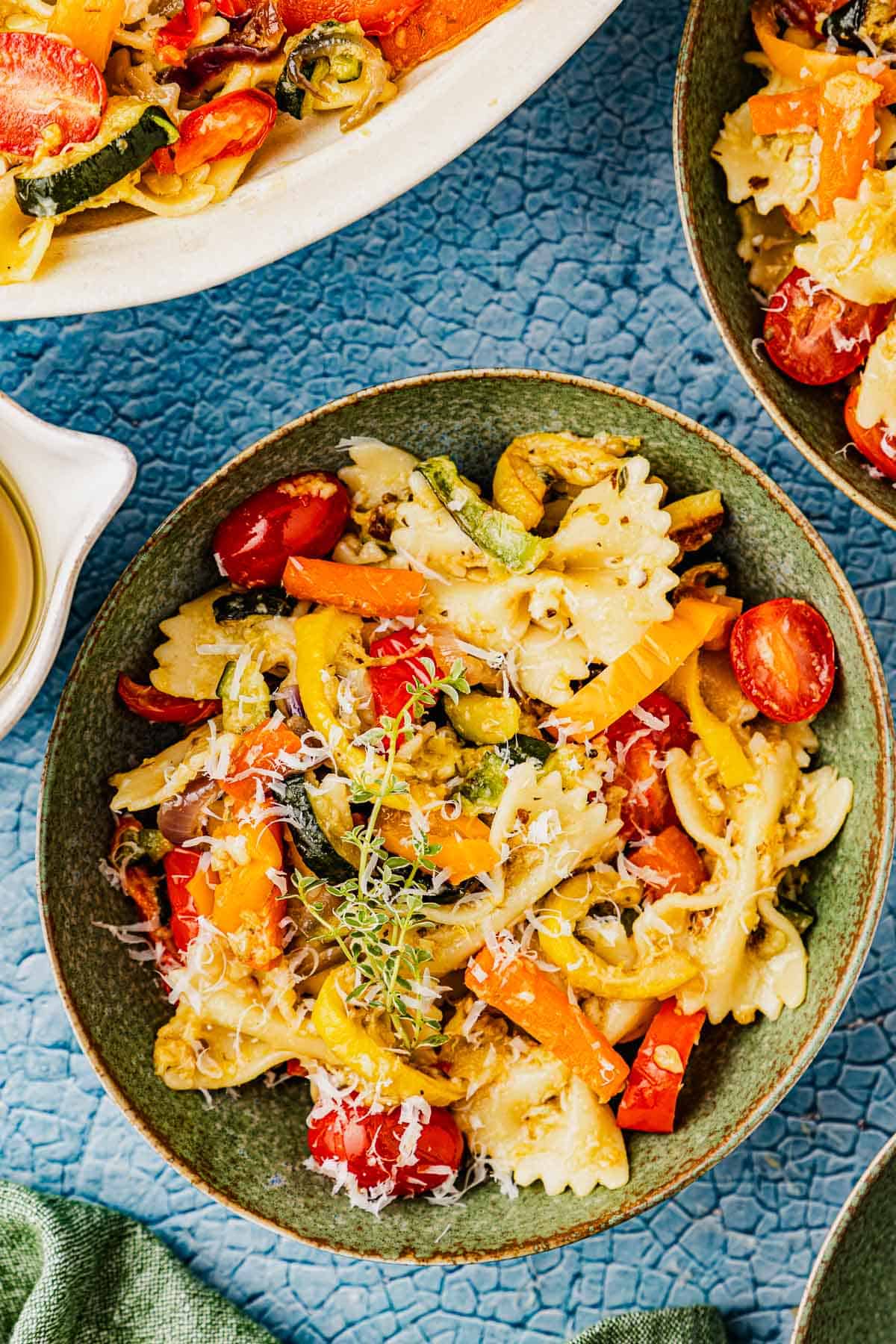
I make pasta primavera sheet pan-style to make things as easy as possible. I simply toss the veggies with olive oil and herbs and roast until they’re just tender, sweet, and a little bit crisped at the edges. Meanwhile, I boil some pasta and throw together a bright fresh salad, like lemon parmesan lettuce salad or panzanella.
This versatile primavera recipe is a delicious way to celebrate fresh vegetables no matter the season. That means it’s never boring! I rarely make it with the same ingredients twice.
Table of Contents
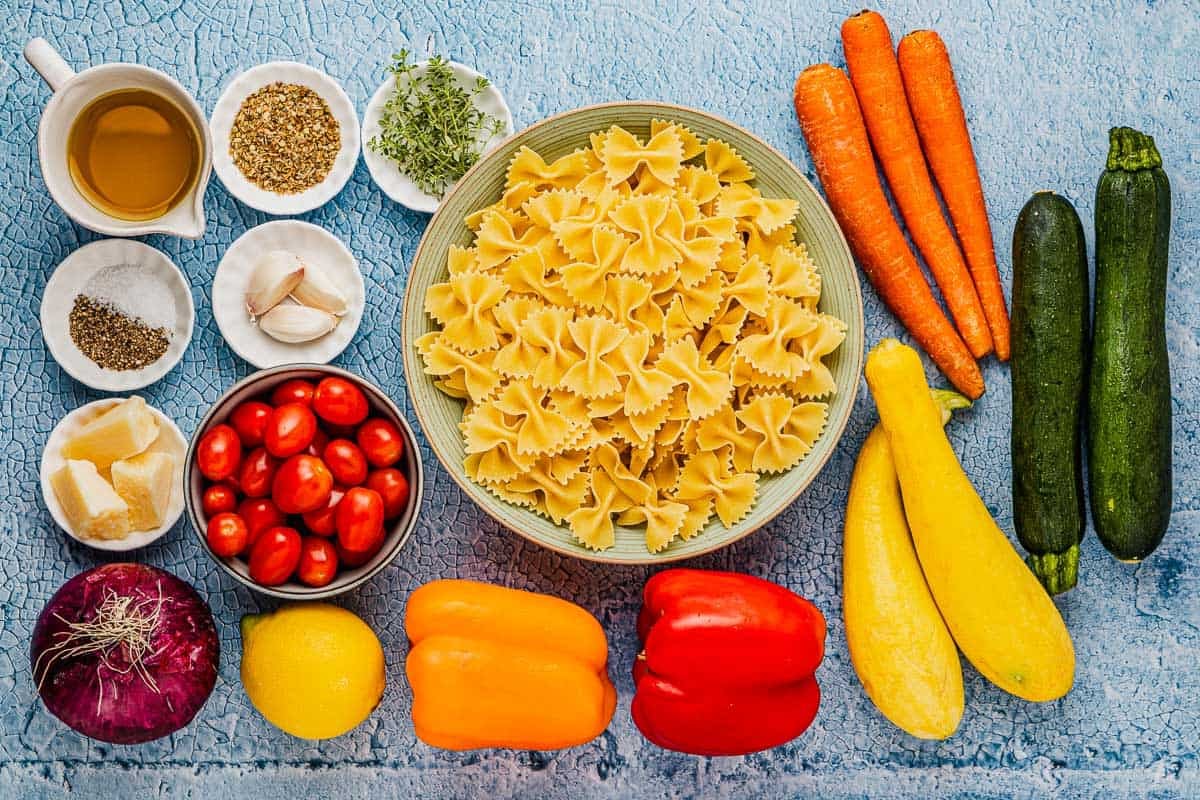
Pasta Primavera Ingredients
Pasta primavera comes from the Italian word for “spring.” Traditionally, the Italian-American dish was used to make the most of a garden bursting with spring veggies. But I love it year-round with whatever seasonal vegetables I have on hand. Feel free to substitute with what you have on hand and what is in season.
- Fresh veggies: Zucchini, yellow squash, carrots, bell peppers, red onion, and grape tomatoes.
- Flavor-makers: Garlic, dried oregano, fresh thyme, salt, and pepper, and fresh lemon zest.
- Pasta: A short pasta is best for making sure everything is bite-sized. I used farfalle, but rigatoni or any short pasta you like would also work well.
- Oil: Use a full flavor yet smooth extra virgin olive oil. I love our buttery Italian Nocellara.
- Parmesan: Adds a savory-salty-nutty quality. Feel free to skip this part if you’d like a vegan or dairy-free primavera.
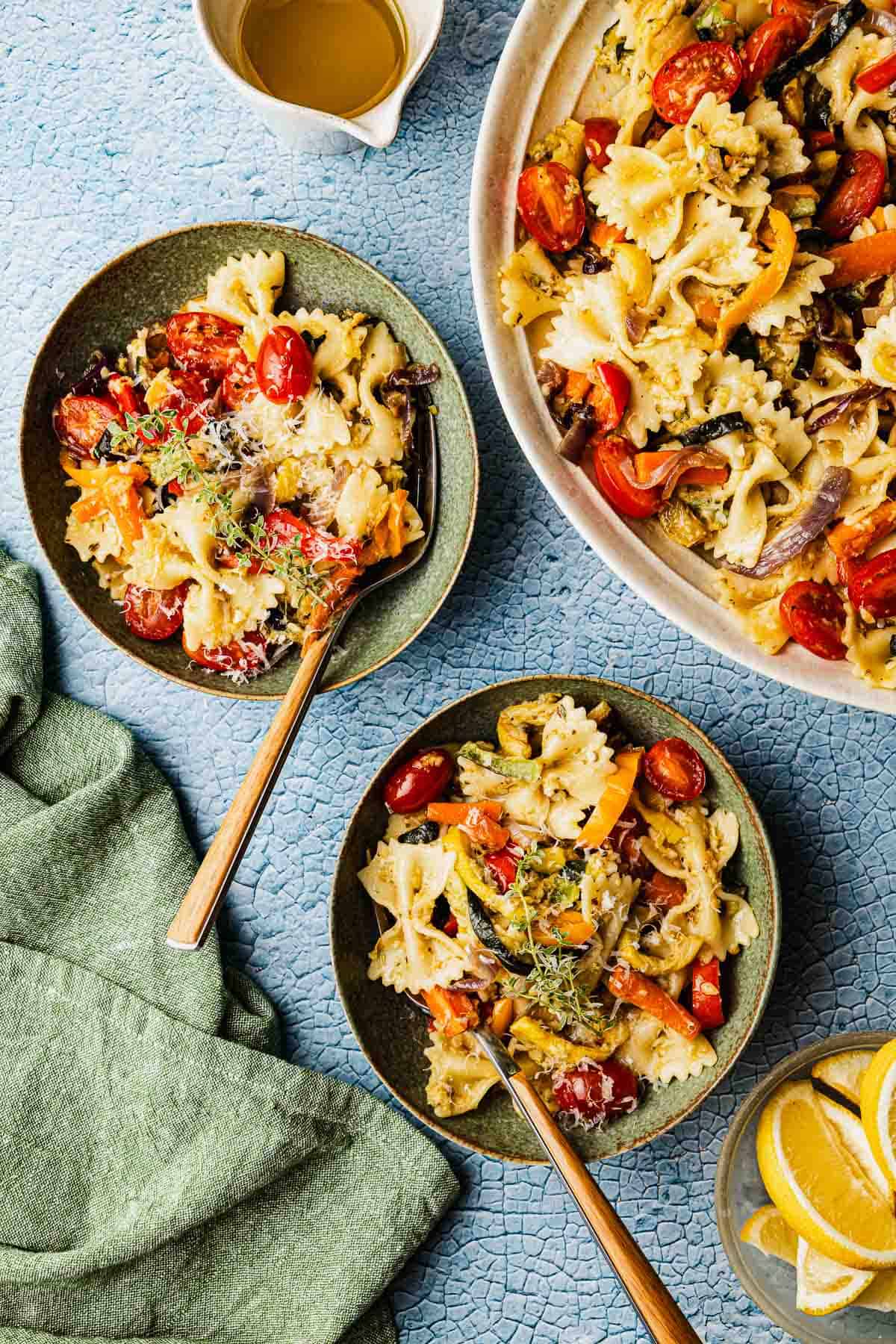
How to Make Pasta Primavera
To make this pasta primavera recipe, grab a pot, sheet pan, knife, grater, peeler, cutting board, and a bowl.
- Get ready. Preheat your oven to 450°F. Bring a large pot of water to a boil, then season generously with kosher salt.
- While your oven heats, grab a large bowl to add the prepared veggies as you go. Slice the zucchini, yellow squash, and onion into half moons. Peel and cut the carrots into short sticks. Slice the bell peppers into strips. Mince the garlic.
- Season the vegetables. Add 1 tablespoon of dried oregano and 1 1/2 teaspoons of fresh thyme leaves. Season with a big pinch of kosher salt and black pepper. Drizzle enough extra virgin olive oil to coat the veggies (about 3 tablespoons). Toss to coat.
- Roast the veggies. Spread the vegetables on a large sheet pan so they’re in one layer. (You may need to use two pans.) Roast on the middle rack for 10 minutes. Give them a good stir, spread them out again, and continue to roast until they’re tender and starting to brown at the edges, about 10 minutes more.
- Boil the pasta. While the vegetables roast, cook the pasta according to the package (about 10 to 12 minutes). Reserve one cup of the pasta cooking water, then drain. Halve the grape tomatoes and zest the lemon. Grate the parmesan.
- Finish the pasta. Transfer the pasta to a large bowl. Add the roast vegetables, tomatoes, and lemon zest. Add a splash of the pasta cooking water and a drizzle of extra virgin olive oil. Toss to combine. Season with salt and pepper to taste. If you’d like, add a sprinkle more of oregano and fresh thyme.
- Serve. Divide among shallow serving bowls and sprinkle on the parmesan cheese. Serve immediately.
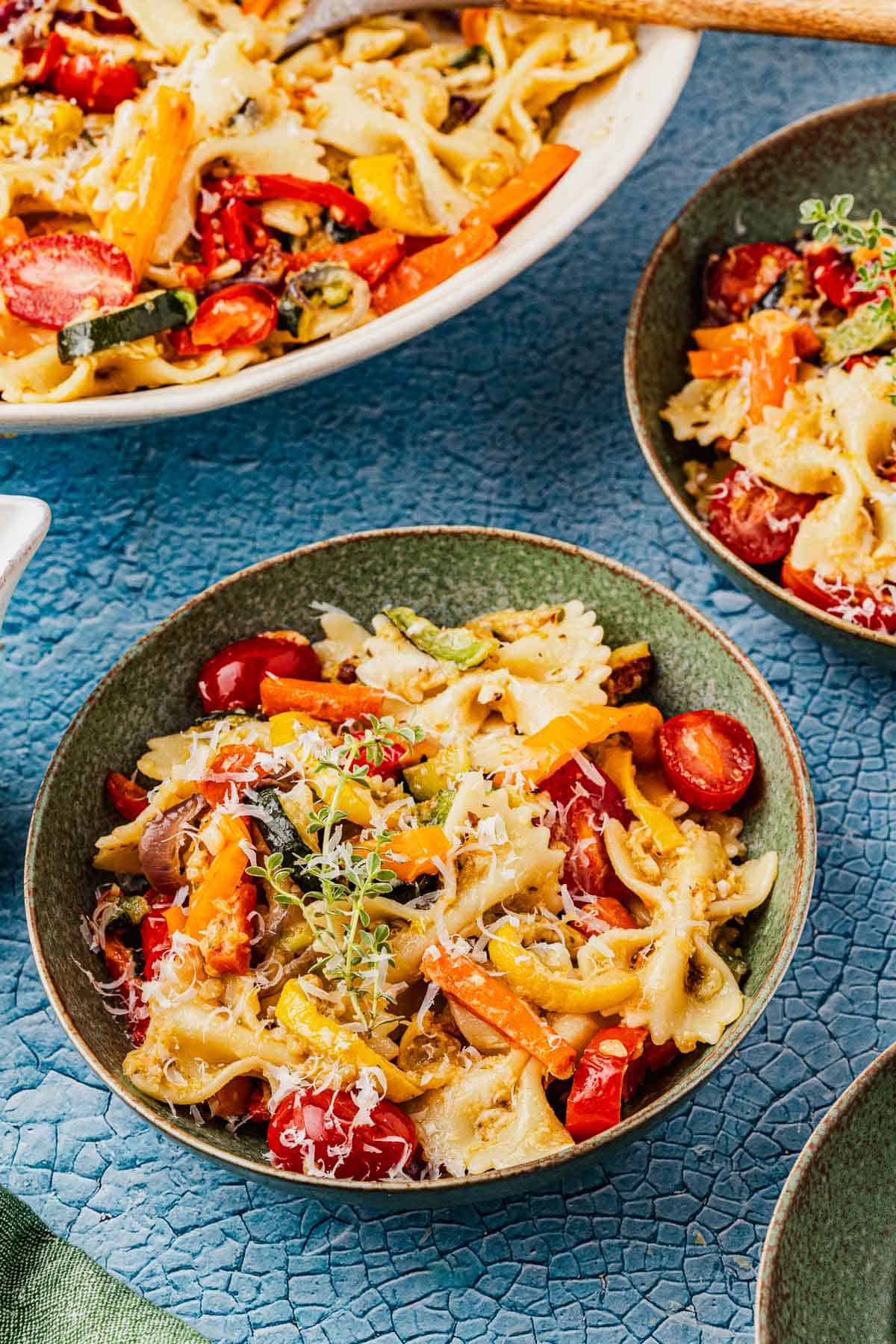
Getting Ahead, Leftovers, and Storage
To get ahead on your pasta primavera, chop all of the vegetables the night before. Add them to a large bowl, cover, and store them in your refrigerator. Simply add the oils and seasonings and roast the next day.
If you have leftovers, allow them to cool completely. Store, covered in your refrigerator, for up to 4 days. To reheat, add the pasta primavera to a saucepan on medium heat on the stovetop. Add a small amount of water and cook until warmed through. Or, serve at room temperature pasta salad-style. You can even dress it up a little with fresh greens like arugula or spinach, a big squeeze of lemon, and a drizzle of olive oil.
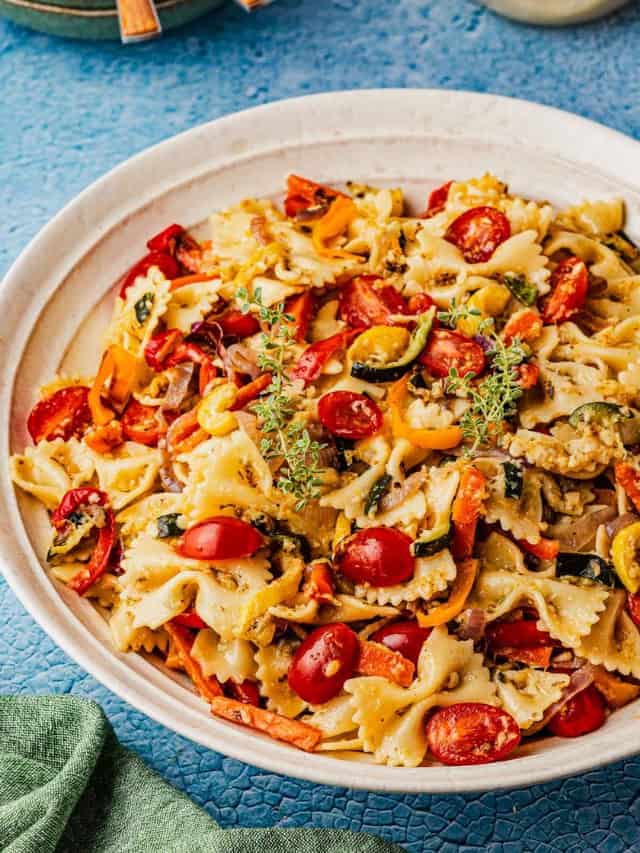
What to Serve with Pasta Primavera
This pasta primavera recipe is satisfying and nutritious enough to stand alone. You can happily stop there, but if you’d like extra protein, try our grilled garlic-parmesan shrimp or grilled chicken breast.
A crunchy side salad also goes well with the silky roast vegetables. Try lemon parmesan lettuce salad or panzanella to keep the Italian flavor party going.
More Vegetarian Pasta Recipes
Browse all Mediterranean Recipes
Visit Our Shop
Easy Pasta Primavera Recipe
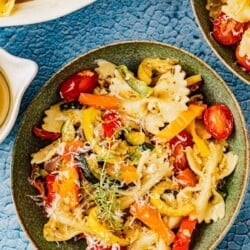
Ingredients
- 2 zucchini, sliced into half moons
- 2 yellow squash, sliced into half moons
- 2 to 3 carrots, peeled and cut into short sticks
- 1 red bell pepper, sliced into strips
- 1 yellow or orange bell pepper, sliced into strips
- 1 red onion, sliced into half moons
- 3 large garlic cloves, minced
- 1 tablespoon dried oregano, plus more for garnish
- 1 1/2 teaspoons fresh thyme leaves, plus more for garnish
- Kosher salt
- Black pepper
- Extra virgin olive oil
- 12 ounces short pasta of your choice (I like farfalle)
- 8 ounces grape tomatoes, halved
- 1 large lemon, zested
- 1/2 cup parmesan cheese, plus more for garnish
Instructions
- Get ready. Preheat your oven to 450°F. Bring a large pot of water to a boil, then season generously with kosher salt.
- Season the vegetables. Place the zucchini, squash, carrots, bell peppers, and onion in a large mixing bowl (save the tomatoes for later). Add the garlic, oregano, and thyme. Season with a big pinch of kosher salt and black pepper. Drizzle enough extra virgin olive oil to coat the veggies (about 3 tablespoons). Toss to coat.
- Roast the veggies. Spread the vegetables on a large sheet pan so they’re in one layer (you may need to use two pans). Roast on the middle rack for 10 minutes. Give them a good stir, spread them out again, and continue to roast until they’re tender and starting to brown at the edges, about 10 minutes more.
- Boil the pasta. While the vegetables roast, cook the pasta in salted boiling water according to the package (about 10 to 12 minutes). Just before it’s cooked to your liking, reserve one cup of the pasta cooking water, then drain.
- Finish the pasta. Transfer pasta to a large bowl and season with salt and pepper to taste. If you’d like, add a sprinkle more of oregano and fresh thyme. Add the roast vegetables, tomatoes, and lemon zest. Add a splash of the pasta cooking water and a drizzle of extra virgin olive oil. Toss to combine.
Video
Notes
- Leftovers: Allow the pasta to cool completely, then cover tightly and refrigerate for up to 4 days.
- Other vegetable options: Change up the vegetables according to what you have on hand. Broccoli, green beans, and asparagus will also work in this recipe.
- Add protein: Cut up some of this quick lemon chicken or grilled chicken and toss in the pasta. Or make this grilled shrimp (remove the shrimp from the skewers and toss in the pasta)
- Visit our shop to browse quality Mediterranean ingredients including olive oils, honey, jams, and spices.
Nutrition
*This post originally appeared on The Mediterranean Dish in 2016 and has been updated with new information and media for readers’ benefit.
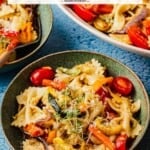
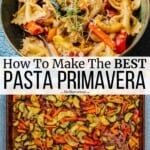
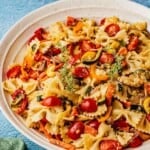
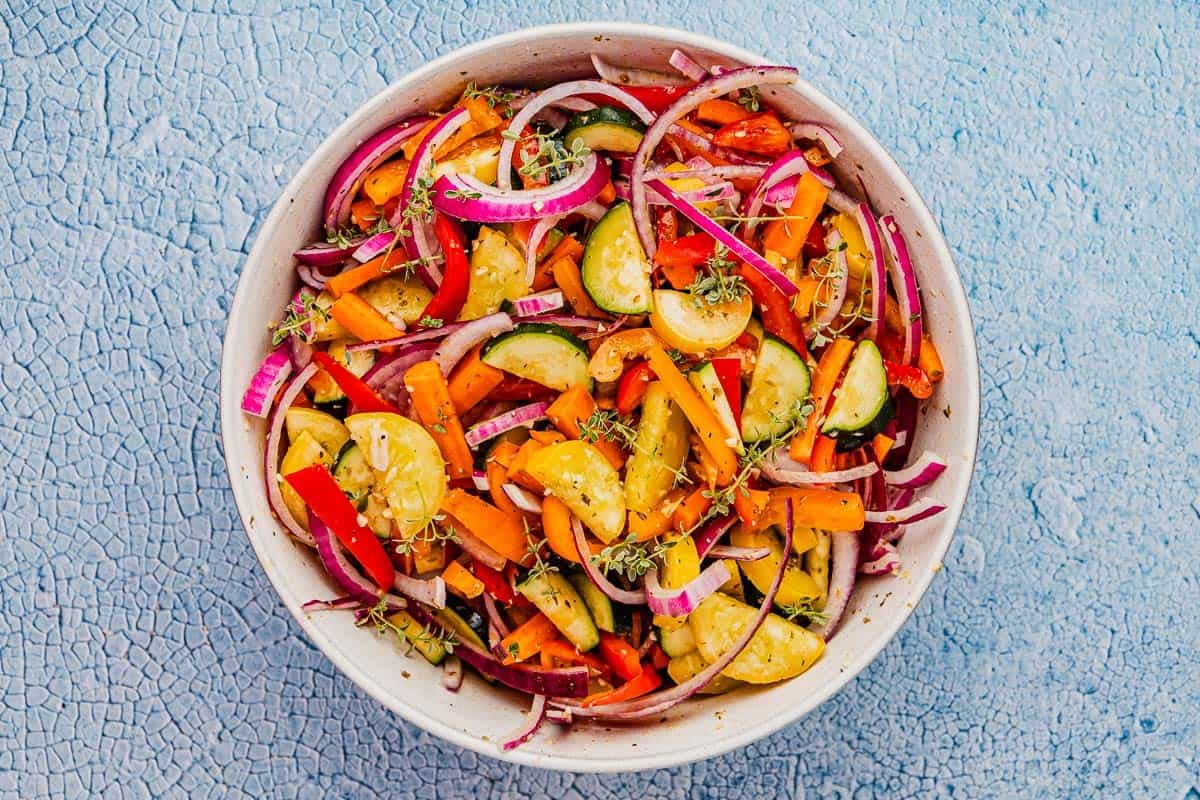
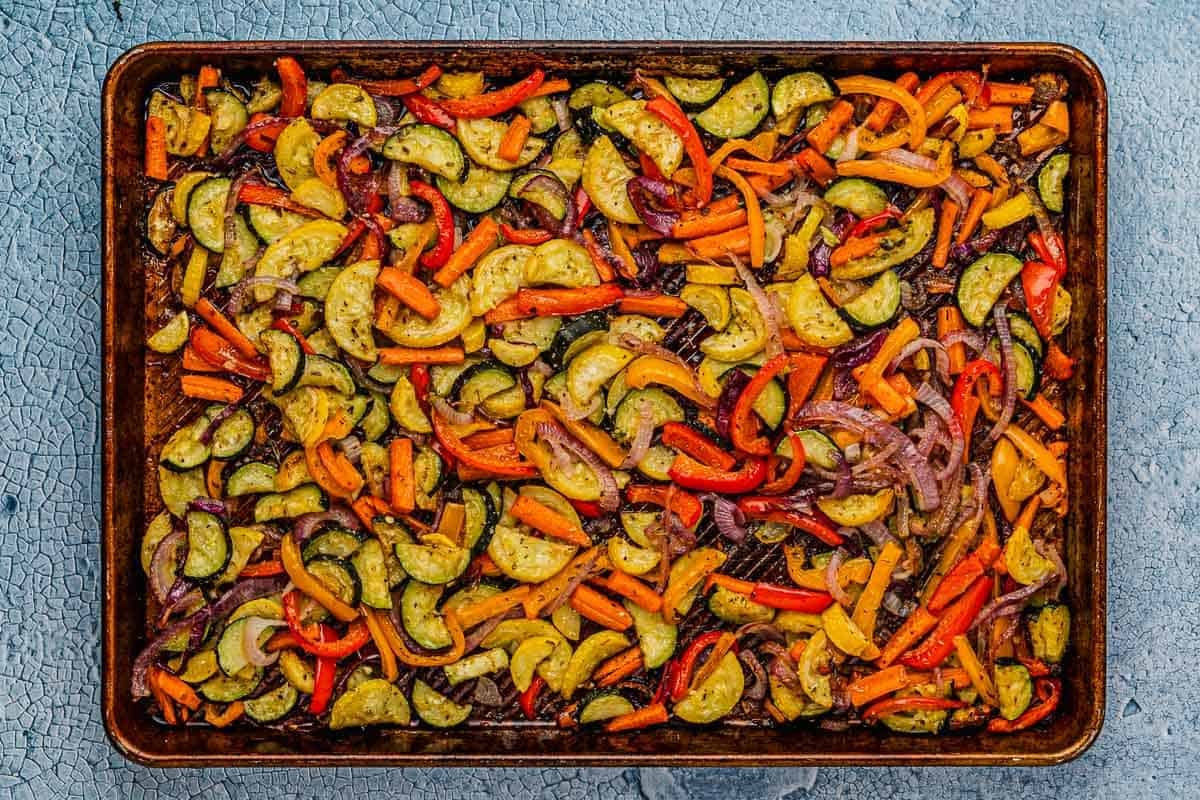
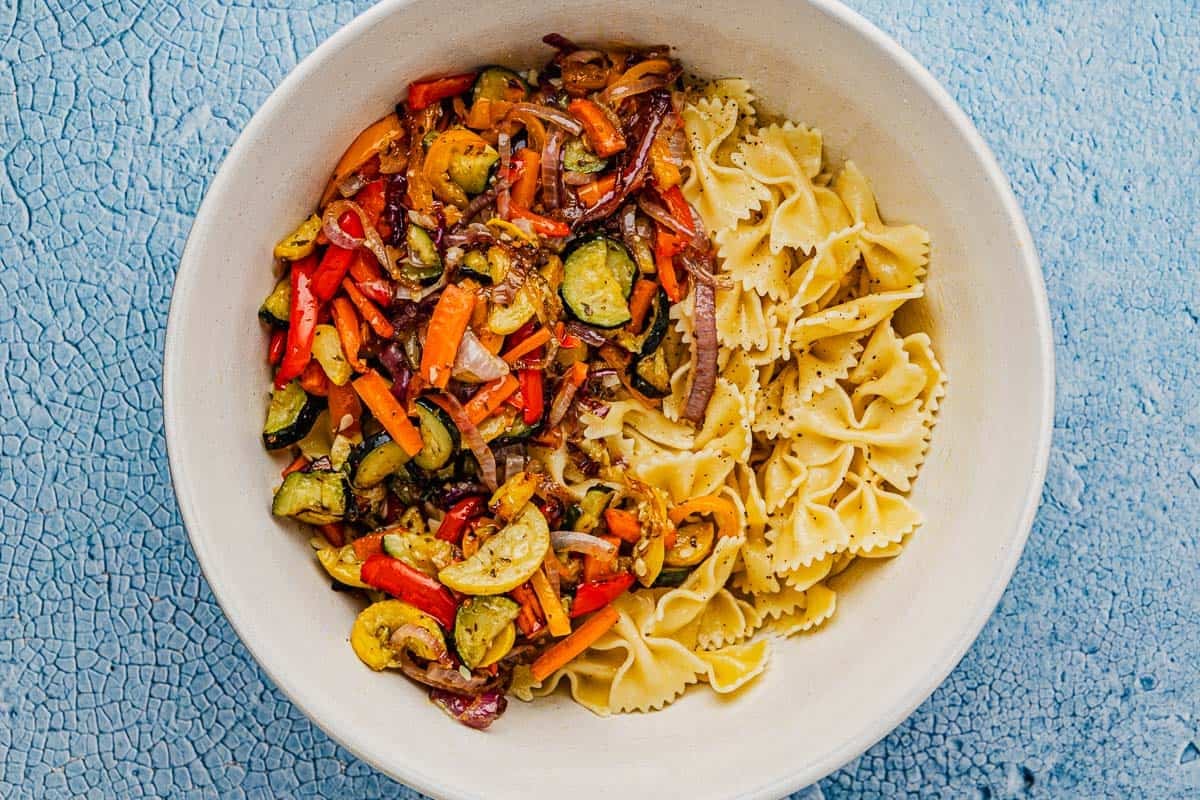
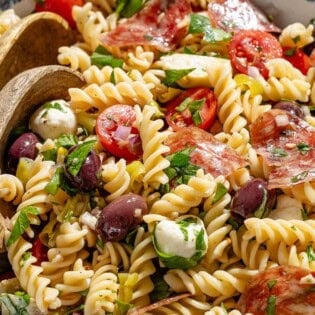
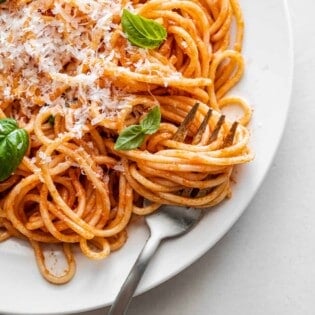
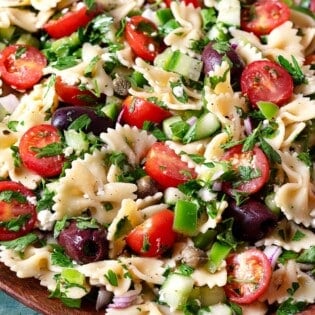
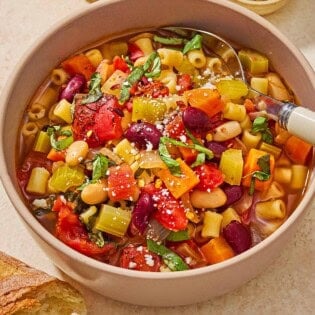
Great recipe and easy to follow- tastes great
I love Italian food. However, I have to watch my carbs. Looking forward to your recipes.
Can this recipe easily be made on the stove top?
Hi, Linda. We’ve never tried this completely on the stove top, but it should work okay. You’d just sautee the veggies in a skillet instead of roasting them.
Yes, I fried the veggies on the stove and it still worked well.
Hi Suzy, this recipe looks amazing! I am curious if I can make any part of this or the whole dish ahead of time? I am trying to make as many things in advance for the holidays in order to enjoy time with family. Any tips on this?
Hi, Lauren! For tips on making this one ahead, you can check out the section in the post titled “Getting Ahead, Leftovers, and Storage.” Hope you have a wonderful holiday season!
I can’t wait to try it.
Hi Suzy, it was so nice to meet you in Costa Mesa last weekend! Can’t wait to start cooking my way through the new book. For today, I went with the Pasta Primavera. I had a bunch of veggies that needed to be cooked so this was the perfect dish! I wish I could upload photos here to show you. I try to make my dishes look like yours, like the chicken shawarma on the spit I showed you at the book signing lol.
Thanks so much, Kim! If you’re on Facebook, please join our community there and share your pics! We’d LOVE to see what you’re making from the site and the cookbook!
Wow! This was so delicious! The only difference I found was that I needed to roast my vegetables a fair bit longer. I’m not a fan of lemon so I left that out. My husband loved it too. I can see making this often! Thank you for sharing!
You are very welcome, Angie! So glad you loved it!
We loved it. I don’t use salt so added a vey little of pecorino Romano to the Parmesan. Mmmm good!!!
Thank you
Yum! Love that idea! Thanks for sharing!
one of my favorite recipes! the roasted veggies gives it great flavor and can be eaten cold the next day as a side. the